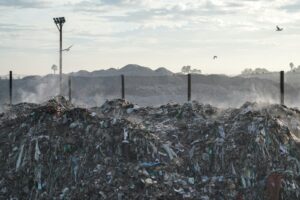Technology will aim to reduce gas flaring by creating transparency
New FlareIntel technology will bring greater transparency to global flaring in the oil and gas sector.
Gas flaring refers to the combustion of associated gas generated during various processes including oil and gas recovery and landfill gas extraction.
Industries use gas flaring as a way to relieve pressure to prevent the risk of explosion, or it is used in the waste product removal from chemical production processes.
However, gas flares are a cause for environmental concern, they are currently responsible for close to 2% of the world’s total greenhouse gas emissions, meaning that if flaring were a country, it would be the 5th largest gas-consuming country in the world.
In a bid to reduce these emissions, Capterio has launched new FlareIntel technology that aims to bring greater transparency by providing the industry with a free, open-access tool that allows everyone to explore flare data in both a country and facility level for the first time.
The technology uses satellite data to provide a detailed insight into each of the world’s 10,000 plus daily flares.
The user can display country, company or field data in terms of volume of flared gas, the resulting potential revenue loss, and CO2-equivalent emissions (both in tonne terms, and in terms of the equivalent yearly CO2 emissions from an average US car) and make comparisons with existing company data.
Dr Mark Davis, the CEO of Capterio, said: ‘If we are going to have any hope of reaching our climate change goals then we must reduce emissions now.
‘Applying flare capture solutions today would create emissions savings equivalent to taking 260 million cars off the road, almost the total number of cars in the EU27. The technology to tackle most flares already exists, and with FlareIntel we now have the detail that both companies and regulators need to make zero flaring a reality.’
Photo Credit – Pixabay












